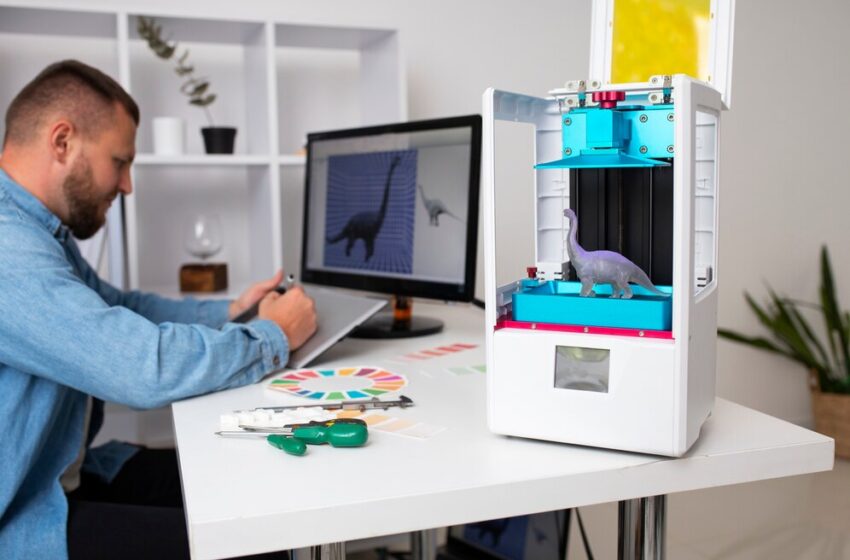
The Impact of 3D Printing on Manufacturing Businesses and Supply Chains
The advent of 3D printing technology has initiated a paradigm shift in manufacturing and supply chain management, offering unprecedented flexibility and efficiency.
This disruptive technology, also known as additive manufacturing, allows objects to be created layer by layer, directly from digital models. Its impact on manufacturing businesses and supply chains is profound, reshaping production processes, product design, and even market structures.
Revolutionising Product Design and Manufacturing
3D printing is transforming the way products are designed and manufactured, enabling more complex designs and faster production times.
Complexity and Customization: It allows for the creation of complex geometries that are difficult or impossible to achieve with traditional manufacturing methods, at no extra cost. This capability opens up new avenues for product customization, meeting specific customer needs without significant increases in price.
Rapid Prototyping: The technology significantly speeds up the prototyping process, enabling designers and engineers to iterate and refine products quickly. This agility accelerates product development cycles, allowing companies to respond to market changes more effectively.
Reducing Costs and Waste
The cost dynamics and waste production in manufacturing processes are significantly impacted by 3D printing technologies.
Material Efficiency: 3D printing builds objects layer by layer, using only the material necessary for the product itself, which drastically reduces waste compared to subtractive manufacturing processes.
Inventory and Logistics Savings: By enabling on-demand production, companies can reduce the costs associated with holding inventory, including storage, management, and transportation. This shift towards a more lean production model can lead to significant savings.
Transforming Supply Chains
The implications of 3D printing extend beyond manufacturing, fundamentally altering supply chain structures and logistics.
Decentralisation of Production: The technology enables a more decentralized production model, where products can be manufactured closer to the point of need. This reduces the need for long supply chains and can significantly cut shipping times and costs.
Reshaping Inventory Management: Traditional models of mass production for inventory are being challenged by the ability to produce goods on demand. This shift can lead to more efficient supply chains that are better able to respond to fluctuations in demand.
Challenges and Considerations
Despite its potential, the integration of 3D printing into existing manufacturing and supply chain frameworks presents several challenges.
Material Limitations: The range of materials suitable for 3D printing is expanding but still limited compared to traditional manufacturing methods. Research and development are ongoing to broaden the material capabilities of 3D printing.
Quality and Consistency: Ensuring consistent quality is a challenge for 3D printing, particularly for larger production runs. Standardization of quality control processes and certification for 3D printed parts are areas of active development.
Intellectual Property Concerns: The digital nature of 3D printing raises concerns around intellectual property protection, as digital designs can be more easily copied and distributed without authorization.
The Future of 3D Printing in Manufacturing
Looking forward, the role of 3D printing in manufacturing and supply chains is set to grow, with several key trends shaping its development.
Increased Adoption and Integration: As the technology matures, more businesses will integrate 3D printing into their production processes, not just for prototyping but for full-scale manufacturing.
Advancements in Materials and Techniques: Ongoing advancements in 3D printing materials and techniques will expand the range of applications, enabling the production of more functional and durable goods.
Sustainability and Efficiency: The environmental benefits of 3D printing, such as reduced material waste and energy consumption, align with growing demands for more sustainable manufacturing practices.
Conclusion
The impact of 3D printing on manufacturing businesses and supply chains is transformative, offering opportunities for increased efficiency, customisation, and sustainability.
While challenges remain, the potential benefits of integrating 3D printing into manufacturing processes are significant. As the technology continues to evolve, it will undoubtedly play a pivotal role in shaping the future of manufacturing, driving innovation, and redefining traditional supply chain models.
The era of additive manufacturing promises not just a revolution in how we produce and deliver goods but also in how we conceive of the very possibilities of design and production.













